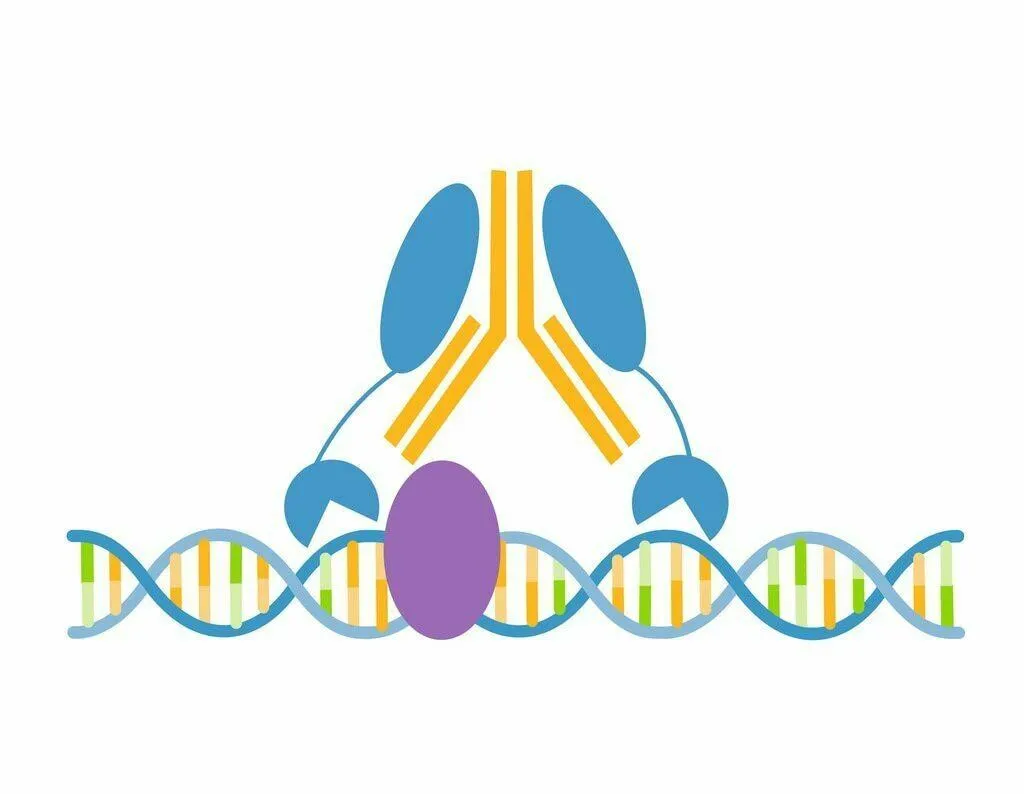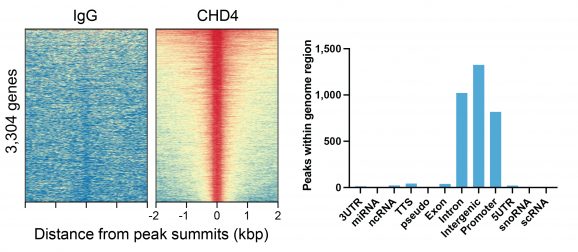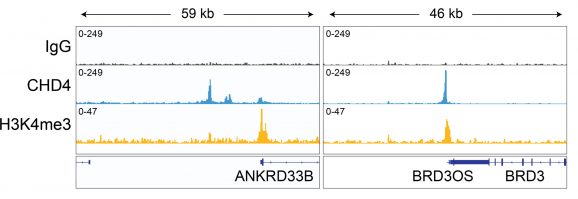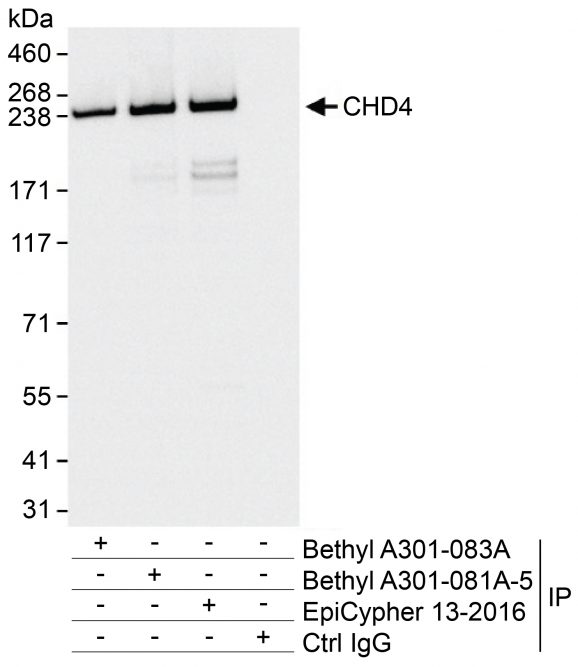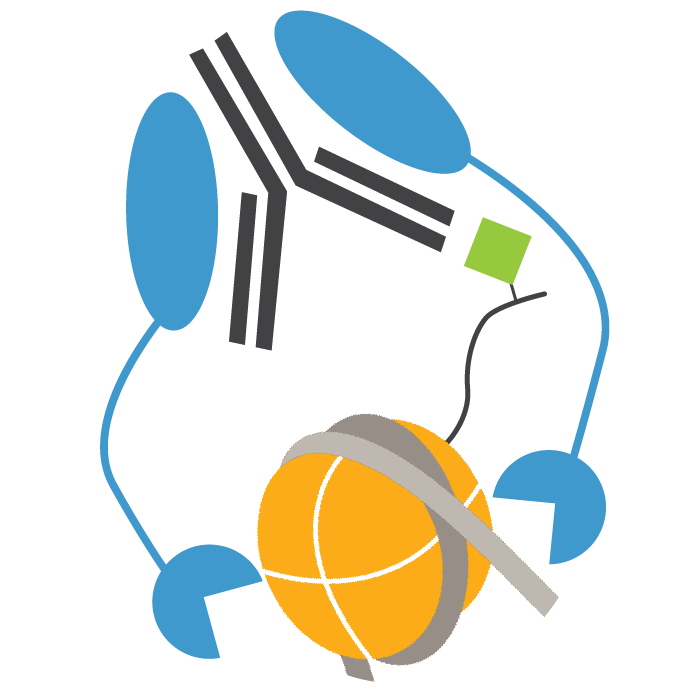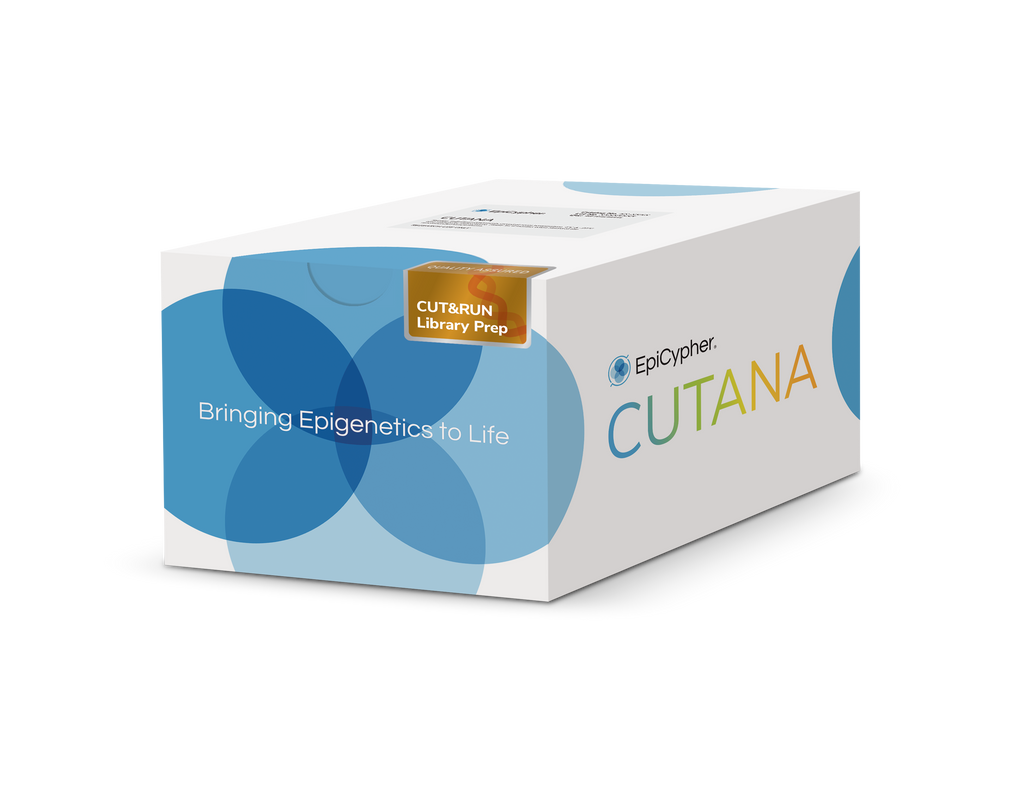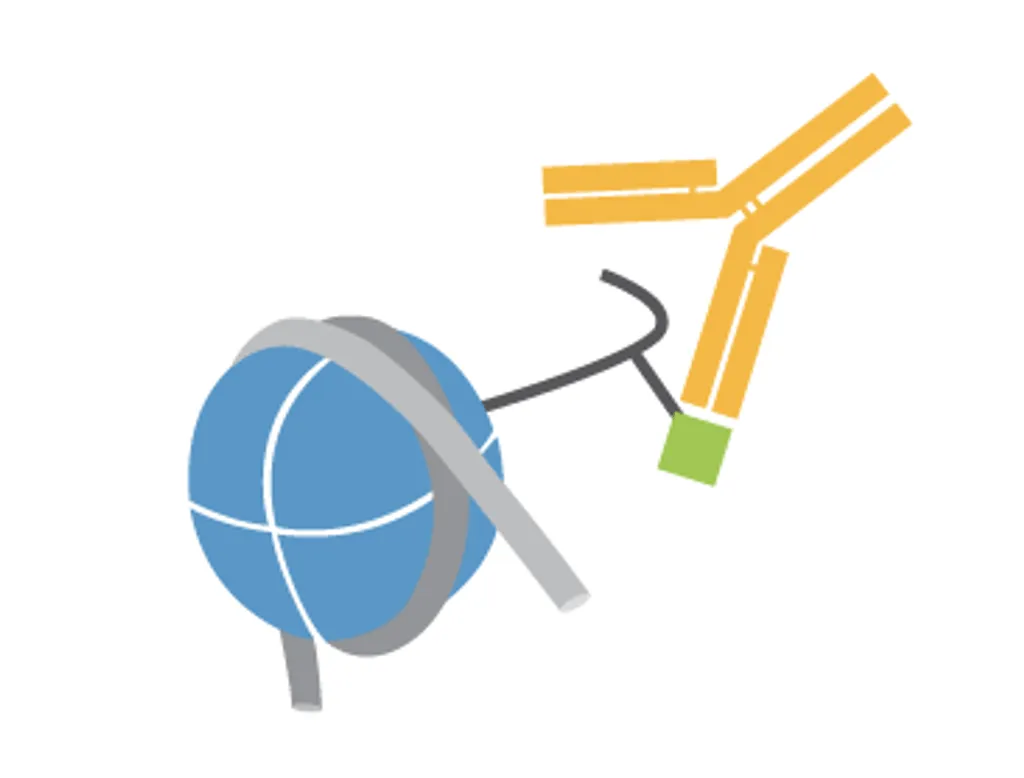CHD4 CUTANA™ CUT&RUN Antibody
In stock
This antibody meets EpiCypher’s “CUTANA Compatible” criteria for performance in Cleavage Under Targets and Release Using Nuclease (CUT&RUN) and/or Cleavage Under Targets and Tagmentation (CUT&Tag) approaches to genomic mapping. Every lot of a CUTANA Compatible antibody is tested in the indicated approach using EpiCypher optimized protocols and determined to yield peaks that show a genomic distribution pattern consistent with reported function(s) of the target protein. CHD4 is a member of the nucleosome remodeling and deacetylase (NuRD) complex. Within the complex, CHD4 remodels chromatin by deacetylating histones [1]. CHD4 antibody produces CUT&RUN peaks above background (Figure 1) within gene promoters, intergenic, and intronic regions (Figures 1-2).
Trademarks and copyrights
Background References:
[1] Tong et al. Nature (1998). PMID: 9804427
CUT&RUN was performed on 500k HeLa cells with 0.5 µg of either CHD4 or IgG negative control (EpiCypher 13-0042) antibodies using the CUTANA™ ChIC/CUT&RUN Kit v2.0 (EpiCypher 14-1048). Library preparation was performed with 5 ng of DNA (or the total amount recovered if less than 5 ng) using the CUTANA™ CUT&RUN Library Prep Kit (EpiCypher 14-1001/14-1002). Both kit protocols were adapted for high throughput Tecan liquid handling. Libraries were run on an Illumina NextSeq2000 with paired-end sequencing (2×50 bp). Sample sequencing depth 5.1 was million reads (IgG), 17.4 million reads (CHD4), and 6.2 million reads (H3K4me3). Data were aligned to the hg19 genome using Bowtie2. Data were filtered to remove duplicates, multi-aligned reads, and ENCODE DAC Exclusion List regions.
Figure 1: CHD4 peaks in CUT&RUN
Figure 2: CHD4 CUT&RUN representative browser tracks
Figure 3: Immunoprecipitation data
- Type: Polyclonal
- Host: Rabbit
- Applications: CUT&RUN, IP, WB
- Reactivity: Human, Mouse
- Format: Antigen affinity-purified
- Target Size: 218 kDa
- CUT&RUN: 0.5 µg per reaction
- Immunoprecipitation (IP): 2-10 µg/mg lysate
- Western Blot (WB): 1:10,000 – 1:25,000
- UniProt ID: Q14839
- Gene Name: CHD4
- Protein Name: Chromodomain-helicase-DNA-binding protein 4
- Target Size: 218 kDa
- Alternate Names: ATP-dependent helicase CHD4, CHD-4, Mi-2b, Mi2-beta, Mi-2 autoantigen 218 kDa protein, Mi-2b

